Twisted Pear Audio Support
»
Product Support
»
Digital
»
Buffalo DAC
»
Buffalo Dac not powering up.. Drawing excessive current
Rank: Member
Groups: Member
Joined: 3/23/2011(UTC)
Posts: 21
Location: Chicago
|
Posting this on the support forum as per Brian's advice. My Buffalo DAC seems to drawing excessive amounts of current (7.5 Amps) and it doesn't power up. The LED lights on the Avcc light up for a split second then go off. Upon testing - it VDD and GND show almost a dead short (0.5 ohms really!). I suspected the SMD caps having shorted out so I tested each one of them and found that C22 C15 and C12 showed a short and 0.5 ohms. Of course - I could be totally wrong about the theory of a cap short and something else is shorted I have attached 7 photos. The last 3 photos show the VDD-GND 0.5 ohms, my power supply voltage (4.86 V) and finally the current draw of 7.5 AMPS!! Couple of points.. 1. The soldering looks bad but rest assured.. .it is the camera and lights reflecting off of the resin. The soldering is quite good.. it is not bleeding like the photgraph is showing 2. 7.5 AMPs is not at 4.86V... obviously the huge current draw forces the PS down to about 3.7V.. 3. This one is a mystery - 7.5 amps and 0.5 ohms should translate to about 28w being dissipated by some component on the board and something should be melting.. but I find nothing on the board getting even a little hot!!! The draw is 7.5 amps even without the avcc module  Brian / Russ - what should I do? Maybe Buffalo is not for me Should stick with my Dual Opus... 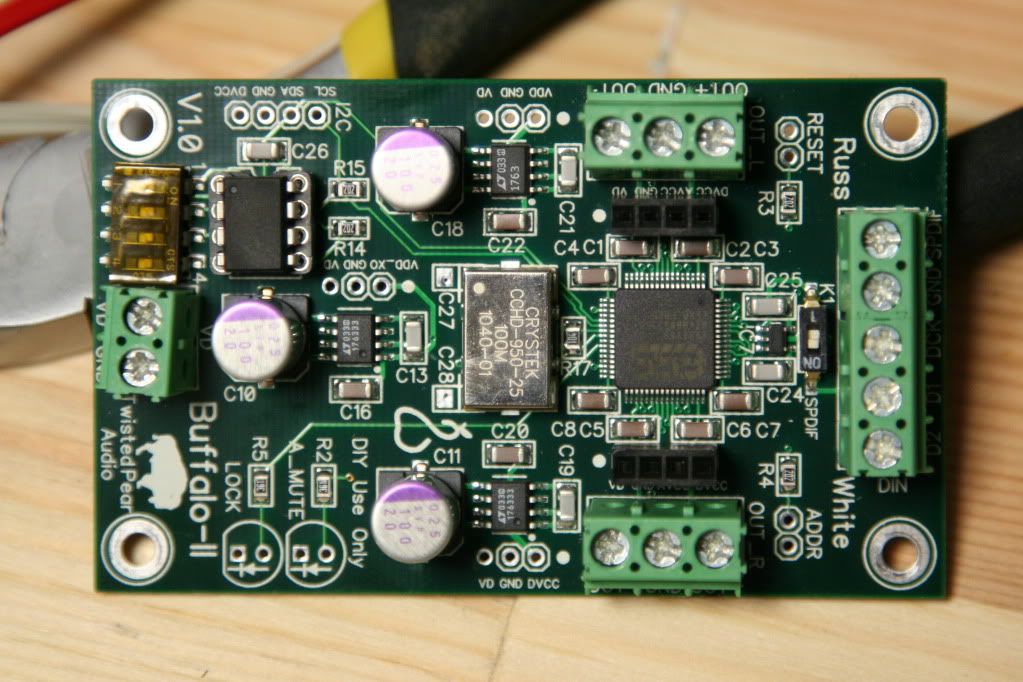 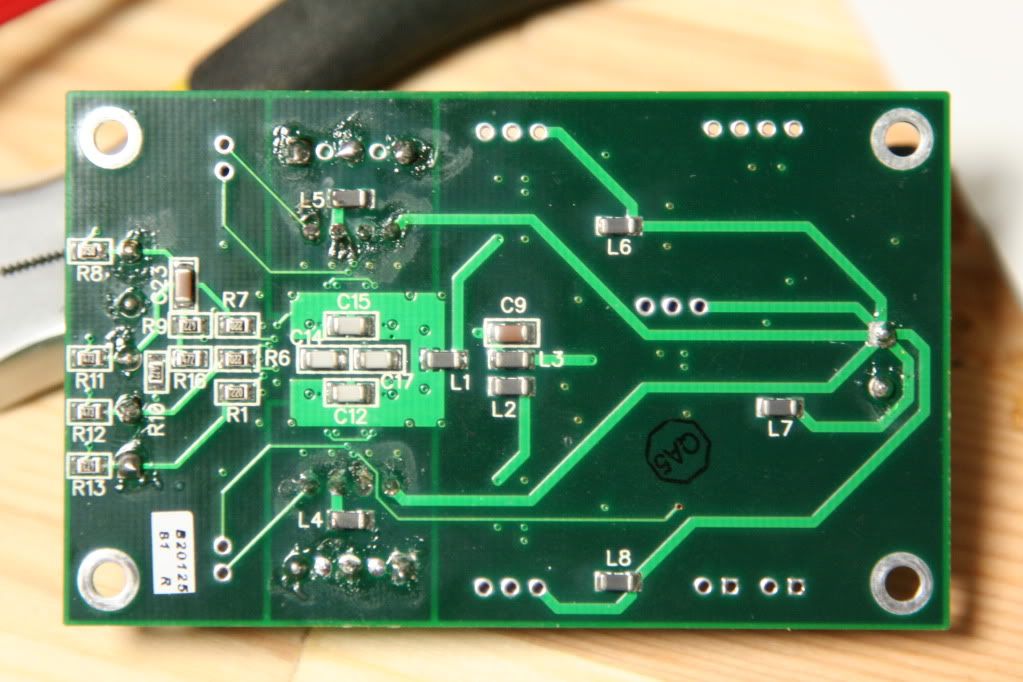 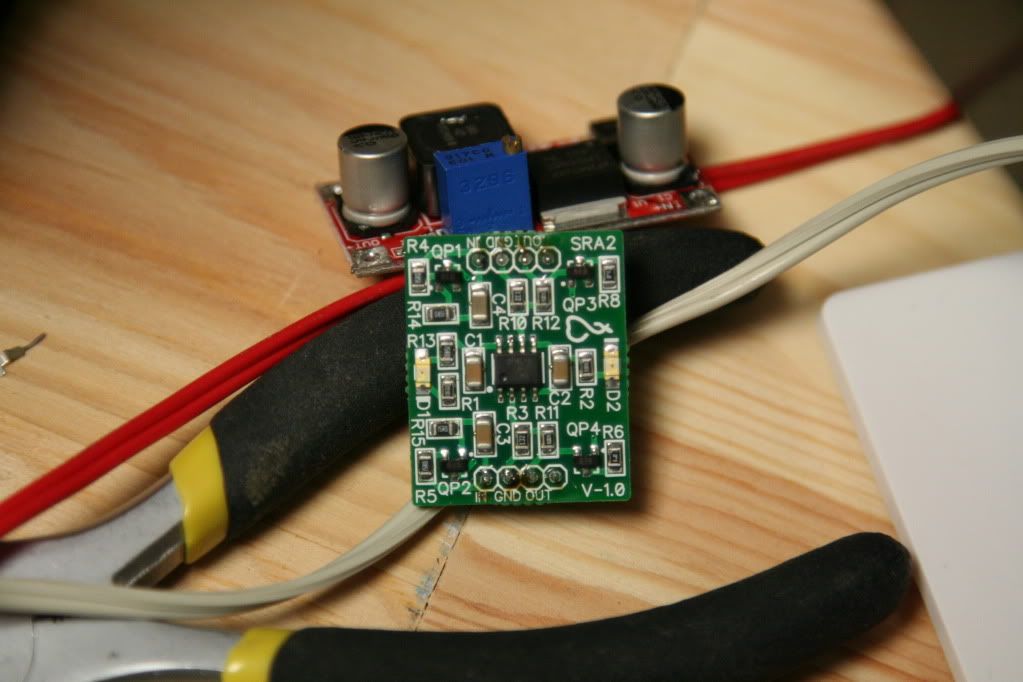  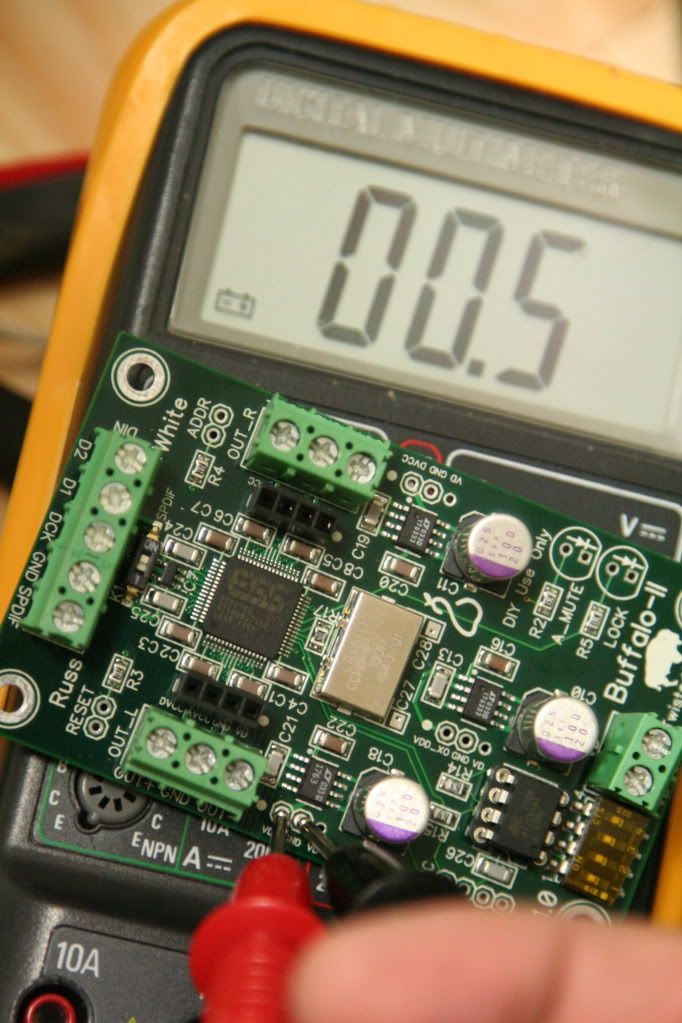 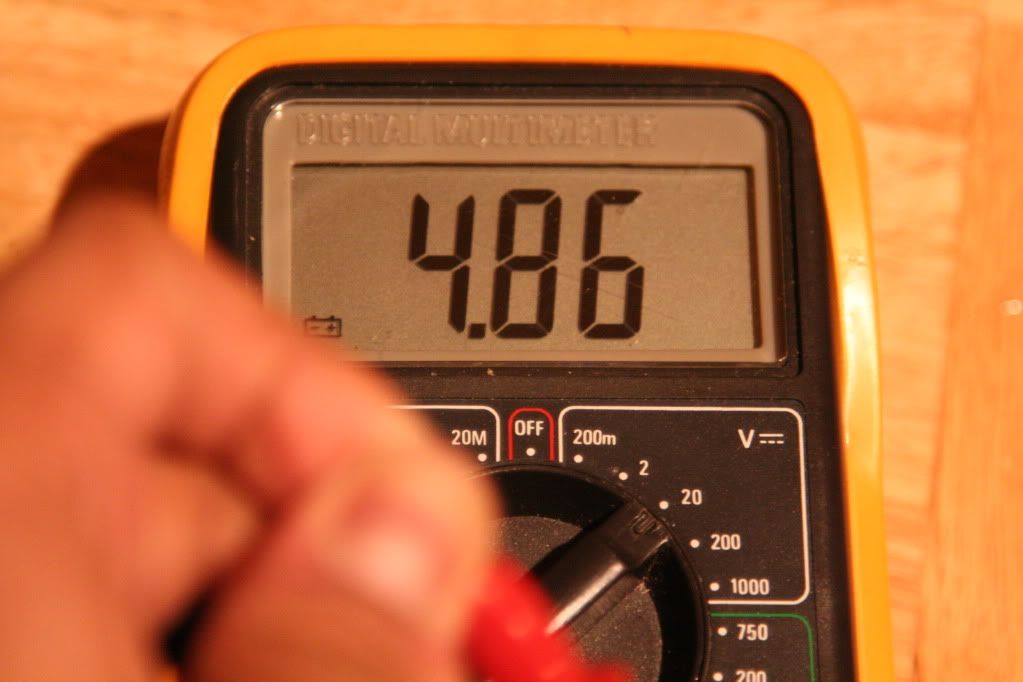 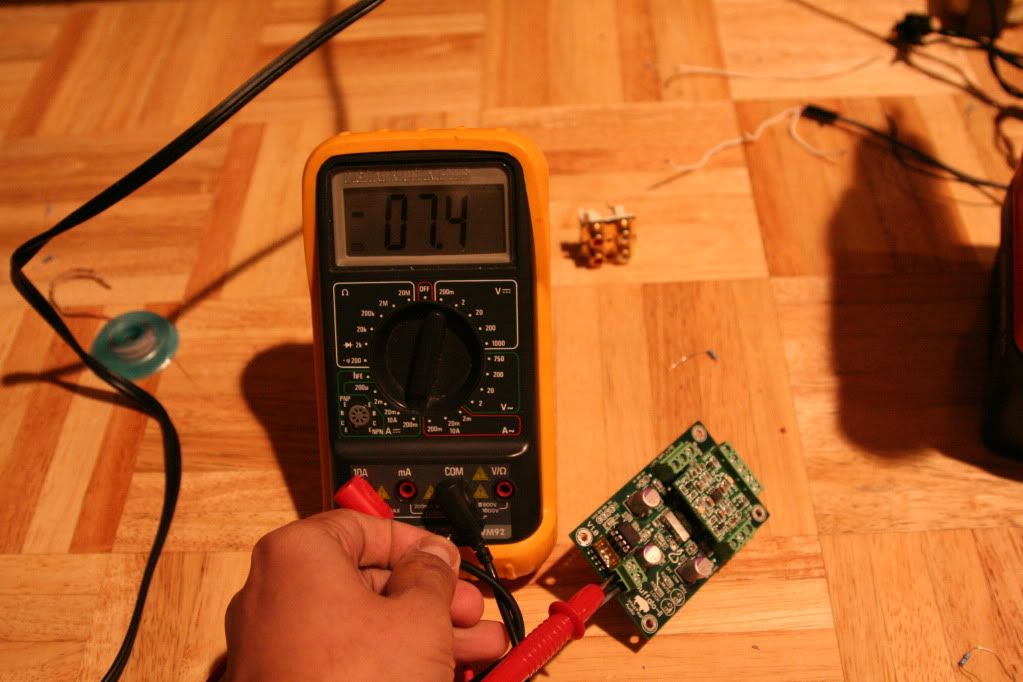
|
|
|
|
|
|
Rank: Member
Groups: Member
Joined: 7/27/2010(UTC)
Posts: 48
Location: Malaysia
Was thanked: 1 time(s) in 1 post(s)
|
From the photos, it isn't clear what setting you have used on your DMM to measure current draw. If your measurement is correct, then the only thing that could draw so much current is a serious short (and something should have blown with that kind of current draw)
Regardless of whether there is a short or not, I think the problem is with your soldering as it is clearly not the best. Look at either side of L4 and L5 on the BII board to begin with. The connector legs on the AVCC module aren't that well soldered too. Clean up all the solder flux ("resin"). Inspect all your soldered points with a magnifier for signs of a short and or dry joints. Look very carefully. Clean up and resolder if needed. Take your time.
|
|
|
|
|
|
Rank: Member
Groups: Member
Joined: 3/23/2011(UTC)
Posts: 21
Location: Chicago
|
21hkz
I will clean up the solder joint an post pictures. The reason they look bad is because they were unsoldered when it did not work the first time around with flux. And then they were resoldered back. With the avcc socket not in place, all points tested and checked under lens - the current draw was so much the placid blew.
So in short.. even with the avcc not on board and the connectors no on board.. vdd and gnd were dead short.
rgd 7.5 amps.. yes.. even my gut reaction was that I am not reading things correctly.. that obviously I was doing something wrong here but the math actually works out - PS voltage drop = 3.7 and current = 7.5 R = 0.5...
In any case - I am going to desolder the avcc legs, clean up resin and post the pic in the PM
My other guesses as to what else might be wrong - PCB fabrication error. I know that Brian tests each board personally so when I make speculations - I hope I am not upsetting him.. I am simply trying to figure out what is wrong
|
|
|
|
|
|
Rank: Member
Groups: Member
Joined: 5/23/2010(UTC)
Posts: 708
Location: Netherlands
Thanks: 2 times
Was thanked: 48 time(s) in 45 post(s)
|
I'd check the soldering just below L5. It looks like you have created a bridge there.
|
|
|
|
|
|
Rank: Administration
Groups: Administration, Customer
Joined: 10/24/2006(UTC)
Posts: 3,979
Location: Nashville, TN
Thanks: 25 times
Was thanked: 89 time(s) in 83 post(s)
|
How are you measuring current draw? The leads of the DMM should be in series with the load. Not from the supply to GND. You are basically shorting out the supply with the DMM. All of the current is going through the DMM itself.
|
|
|
|
|
|
Rank: Administration
Groups: Administration, Customer
Joined: 10/24/2006(UTC)
Posts: 3,979
Location: Nashville, TN
Thanks: 25 times
Was thanked: 89 time(s) in 83 post(s)
|
Placid will not blow with current draw. Because it is a constant current source. It always sources the same amount of current regardless of load. Even into a dead short, the worst that will happen is the voltage will drop, unless you have very poor heat-sinking. Based on your account, I am starting to think you had a serious issue with the Placid and that may well have damaged your DAC. Edited by user Thursday, March 24, 2011 1:35:34 PM(UTC)
| Reason: Not specified
|
|
|
|
|
|
Rank: Administration
Groups: Administration, Customer
Joined: 10/24/2006(UTC)
Posts: 2,869
Location: Massachusetts, USA
Thanks: 2 times
Was thanked: 141 time(s) in 134 post(s)
|
I think the picture of the leads on VDD and GND is measuring the voltage, and the final picture is the DMM measuring voltage across a resistors in series with the V+ terminal. I agree about the Placid. Can you describe what happened when it died? Did the LEDs flash orange? If so, they are probably installed backwards and are now dead. Another thing to check is transistor misplacement. After the failure, if you power the Placid (not connected to the DAC), what is the output voltage? Edited by user Thursday, March 24, 2011 3:03:22 PM(UTC)
| Reason: Not specified
|
|
|
|
|
|
Rank: Administration
Groups: Administration, Customer
Joined: 10/24/2006(UTC)
Posts: 3,979
Location: Nashville, TN
Thanks: 25 times
Was thanked: 89 time(s) in 83 post(s)
|
If so he has the leads plugged into his DMM wrong. The red lead is plugged into 10A. Which is for measuring current, not voltage.
|
|
|
|
|
|
Rank: Member
Groups: Member
Joined: 3/23/2011(UTC)
Posts: 21
Location: Chicago
|
Looks like I have caused a lot of confusion .. Apologies let me try to clear it up
I have a Opus with Placid that I have been listening for quite a while now.. More than 4 months. When I got the Buffalo II - I decided to remove the Placid from my working dual mono setup and connect it to the Buffalo for testing.
Upon connecting the Placid... The LEDs on the Buffalo did not light up. So I first set out to ensure that the Placid was not damaged in any way. Measured the voltage and sure enough - no output. It was simply dead. I am not sure what killed it. I understand that it is a constant current source and at best a dead short across the o/p will simply drop the voltage and will not kill it but at present it is dead. Leaving that aside..
Coming back to the Buffalo 2..
I then tried to power it via another Power supply and noticed that this power supply got really hot after I left it on for 10 mins connected to the Buffalo. That is when it struck me to inspect the Buffalo to determine if there was a short
I found that VDD to GND showed a dead short and so did the caps I mentioned in my post. So to make sure I did not mess up any soldering.. I unsoldered the avcc female from the board and removed all solder traces with a soldering braid. It was completely clean.
The VDD to GND and the Caps were still showing dead short. So I soldered them back on (in a hurry) because I wanted to take pics for Brian. Tonight I will desolder them completely (so that my soldering skills are not in question :-)
and post some pics
Regarding the pics themselves.. The pic that shows 4.86V is the o/p of my power supply.. not connected to the board or anything..
The next pic that shows the 0.5 ohms is measured across the VDD and GND.. power supply is not connected at this point.. I posted this pic to show that there is a short
The next one is my multimeter connected in series with the PS and the Buffalo showing 7.5 amps. Here I admit.. I have no explanation.. I can't understand how 7.5 amps into a 0.5 is not making anything smoke on the board (maybe I am reading the current reading incorrectly??).
But again.. not to confuse the issues about the Placid, power supply, current draw etc... In short (no pun intended :-) - the buffalo is not turning on even with 4 C batteries. VDD to GND and some caps are showing dead short. I am sure as I can be that it is not the soldering.
Russ - I posted on the Buffalo 32s on diyaudio by mistake.. I will delete that post..
I seem to getting more help here
You guys are simply awesome in helping me out.. can't thank you enough
Apologies.. if confused everyone
|
|
|
|
|
|
Rank: Member
Groups: Member
Joined: 3/24/2011(UTC)
Posts: 7
Location: near Kansas City
|
I think you're on the right track. My first instinct was a short beneath one of those AVCC headers, as VD and GND are right next to each other. At work, if I get something with a hard short like this, I limit the current on my lab supply (.75A or so) and let the board "cook". The shorted component will eventually expose itself after 5 or 10 minutes as it warms up. 7 amps will burn something like a capacitor or chip real quick so I would think it would be something more like a blob under a connector. Hopefully those inner pcb layers are still OK...
|
|
|
|
|
|
Rank: Member
Groups: Member
Joined: 3/23/2011(UTC)
Posts: 21
Location: Chicago
|
Thanks William. Phew! For some time there I thought I was completely off track.. So regarding leaving the PS with 7.5 limit for some time... I agree with you.. Eventually something would burn out. Three problems here. My PS has a limit of 5A (current limiting). I am not sure how it is supplying 7.5 amps but that is a topic for a different time. It is serving up 7.5 amps and dropping to 3.7 VDC which it never should.. and it is getting hot..I have to return it. Don't want to burn it. The second problem was that I wanted to make sure the short was not in the chip.. I wouldn't want to see the chip cooked :-) Russ/Brian.. what do you think? Third - I actually did leave it on for 10 mins (not knowing what was wrong) when I first connected the placid.. The placid got really hot and died. Again.. I have no idea how a current limiting circuit could cook itself. (topic for yet another day... mysteries abound) Now - nothing on the buffalo board was even slightly warm!! Biggest mystery Also.. as promised.. new pics :-) I cleaned up all the solder joints with isopropyl alcohol so that everyone could admire the soldering heh heh.. I know my soldering skills are just ok but that last picture simply did me a huge dis favor.. the first pic is the back of the board all cleaned up.. Second pic is simply showing the short between VDD and GND... (I had to have someone take the pic) 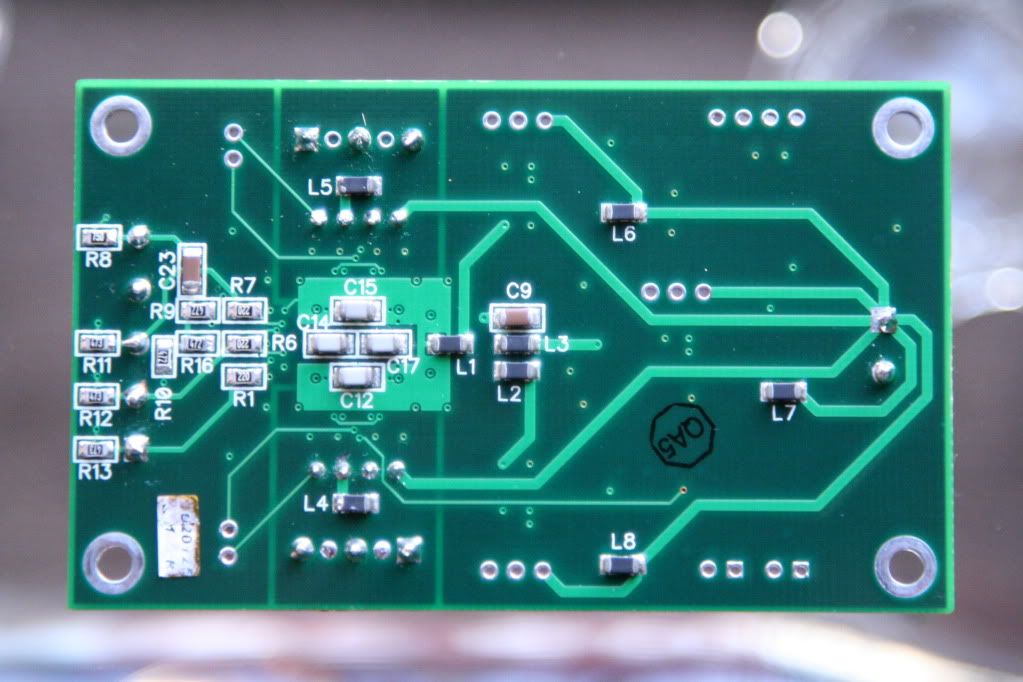 
|
|
|
|
|
|
Rank: Administration
Groups: Administration, Customer
Joined: 10/24/2006(UTC)
Posts: 2,869
Location: Massachusetts, USA
Thanks: 2 times
Was thanked: 141 time(s) in 134 post(s)
|
Try removing the firmware chip.
|
|
|
|
|
|
Rank: Member
Groups: Member
Joined: 3/24/2011(UTC)
Posts: 7
Location: near Kansas City
|
good suggestion Brian... first rule of troubleshooting, try the easy stuff first
|
|
|
|
|
|
Rank: Administration
Groups: Administration, Customer
Joined: 10/24/2006(UTC)
Posts: 2,869
Location: Massachusetts, USA
Thanks: 2 times
Was thanked: 141 time(s) in 134 post(s)
|
Plus it's not on there when I test them (I use Volumite and headphones out of an IVY-III). Still an outside chance...
|
|
|
|
|
|
Rank: Member
Groups: Member
Joined: 3/23/2011(UTC)
Posts: 21
Location: Chicago
|
Brian Donegan wrote:I think the picture of the leads on VDD and GND is measuring the voltage, and the final picture is the DMM measuring voltage across a resistors in series with the V+ terminal.
I agree about the Placid. Can you describe what happened when it died? Did the LEDs flash orange? If so, they are probably installed backwards and are now dead. Another thing to check is transistor misplacement.
After the failure, if you power the Placid (not connected to the DAC), what is the output voltage? Brain - the exact way the placid died I am not sure. I ran upstair cause duty called (not more than 2 mins) and when I came back I could smell the burn. I immediately disconnected everything and started to inspect my new toy.. the Buffalo - I did not even suspect that the placid was rancid (sorry for the pun ;-) By the time I convinced myself that it wasn't the buffalo and turned my attention to the placid.. it had cooled down and I couldn't tell what had burned. But I can tell you this for sure.. I have smelled a lot of burned electrolytic caps .. it smelled exactly like that. I will check the placid tonight and will be able to tell you better tonight. Regarding whether I had is backward. No - That I am a 100% sure of.. I pulled the placid from the opus dac and connected them and adjusted the vdc down to 5 from 7.5 (opus was driven at 7.5). Only then did I connect it. The one side of the placid still works. I did not want to burn that side too so I haven't tried connecting it back on the working side.. For now - my attention is on fixing the Buffalo.. so I will send the placid pics in a bit
|
|
|
|
|
|
Rank: Member
Groups: Member
Joined: 3/23/2011(UTC)
Posts: 21
Location: Chicago
|
Brian Donegan wrote:Plus it's not on there when I test them (I use Volumite and headphones out of an IVY-III). Still an outside chance... Yep.. that was easy.. I pulled the firmware chip out and VDD to GND is still 0.5 ohms Pic attach.. alebit.. hazy but clear enough.. I guess.. I could not find someone to hold it this time.. 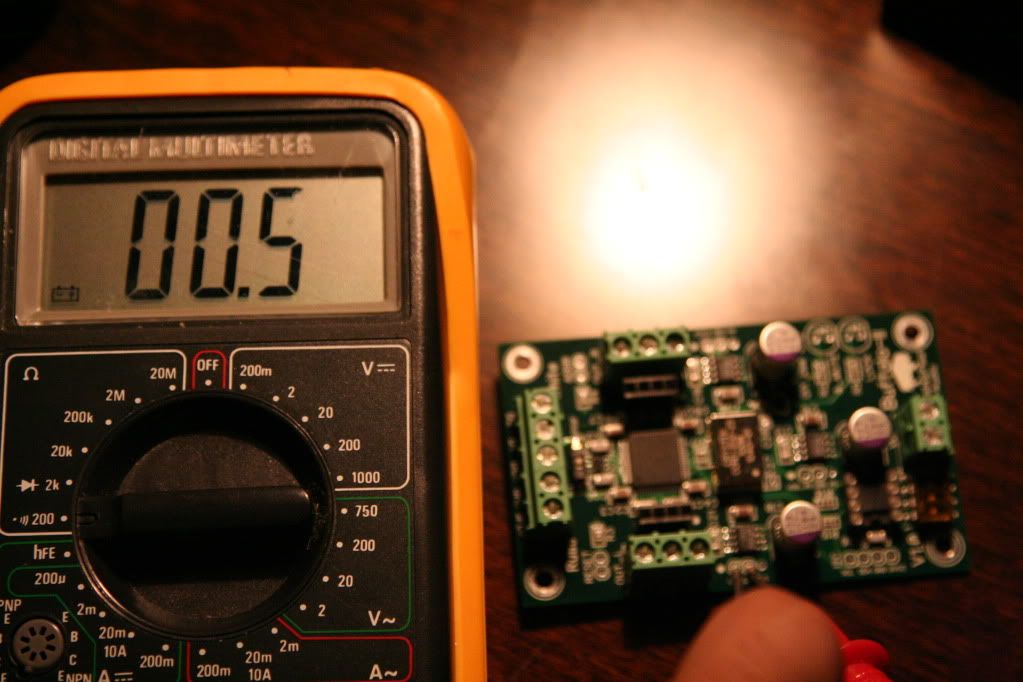
|
|
|
|
|
|
Rank: Administration
Groups: Administration, Customer
Joined: 10/24/2006(UTC)
Posts: 3,979
Location: Nashville, TN
Thanks: 25 times
Was thanked: 89 time(s) in 83 post(s)
|
If the placid went bad it very likely took out the buffalo. So its very important to know why it did that. As I said earlier, a properly functioning Placid is a constant current source even into a dead short. It should never fail as you described unless there was something awry with it. And if it did fail like you describe it is quite possible it subjected the DAC to too much voltage. That could have occured if there was a short around the CCS section of the placid. This could have caused several catastrophic things to happen on both the Placid and the DAC. Edited by user Thursday, March 24, 2011 6:37:31 PM(UTC)
| Reason: Not specified
|
|
|
|
|
|
Rank: Administration
Groups: Administration, Customer
Joined: 10/24/2006(UTC)
Posts: 3,979
Location: Nashville, TN
Thanks: 25 times
Was thanked: 89 time(s) in 83 post(s)
|
Also, just to be clear, there is no chance that there is a short on the inner layers. This is because I know precisely what is routed there and how. :) Also the board itself passed both the PCB QA and ours. My best guess is one of the regulators and the only way to know for sure is to begin removing the ferrites one by one. If removing the VDD ferrite solves it you know its either the VDD reg or some component on the VDD rail. Edited by user Thursday, March 24, 2011 6:26:25 PM(UTC)
| Reason: Not specified
|
|
|
|
|
|
Rank: Administration
Groups: Administration, Customer
Joined: 10/24/2006(UTC)
Posts: 3,979
Location: Nashville, TN
Thanks: 25 times
Was thanked: 89 time(s) in 83 post(s)
|
So far I only recall that you have measured VDD to GND, have you checked the others?
|
|
|
|
|
|
Rank: Member
Groups: Member
Joined: 3/23/2011(UTC)
Posts: 21
Location: Chicago
|
Russ White wrote:So far I only recall that you have measured VDD to GND, have you checked the others? Yes.. I measured several points on the Buffalo.. The caps c22 c15 and c12 and VDD to GND.. nothing else. Regarding the placid going bad and taking out the dac.. yes.. I am not ruling that out. The only reason I am hesitant to blame it on the placid is because it was powering the opus for a long time. I pulled it out.. connected it and then adjusted the voltage down to 5V. I connected the Buffalo turned it back on and the LED on the Avcc flickered. Buffalo did not turn on. I checked the output voltage was it was steady at about 4.7V. I started at it for about 2 mins, disconnected the placid and tested the output again. It was 5V. I connected it back and voltage dropped to 4.7. I ran upstairs for 10 mins (at most) and the rest you know I waited for more than 2 weeks before I decided to register and explain my problem because I too was concerned that I had done something wrong. I thought about every single thing and back traced my steps and finally decided to post when I was sure that I had done nothing out of the ordinary I even researched all the posts to see if anyone had any issue like mine and found none!! VDD ferrite? Which one is that.. I will pull it out to be be sure Again.. I know I am taking up so much of everyone's time .. thanks everyone..
|
|
|
|
|
|
Twisted Pear Audio Support
»
Product Support
»
Digital
»
Buffalo DAC
»
Buffalo Dac not powering up.. Drawing excessive current
Forum Jump
You cannot post new topics in this forum.
You cannot reply to topics in this forum.
You cannot delete your posts in this forum.
You cannot edit your posts in this forum.
You cannot create polls in this forum.
You cannot vote in polls in this forum.